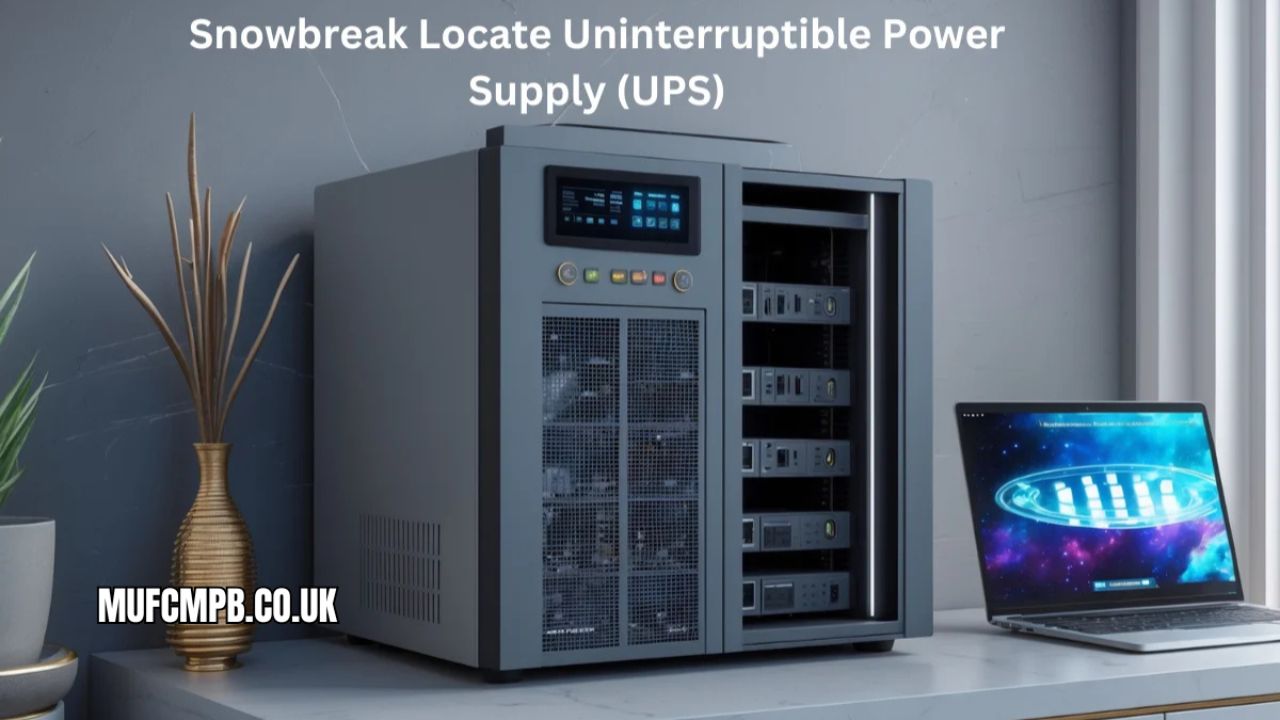Snowbreak Locate Uninterruptible Power Supply for Critical Power Stability
In regions where winter storms can disrupt power supply systems, a UPS becomes an invaluable tool. These devices not only protect sensitive equipment but also ensure an uninterrupted workflow. Snowbreak locate uninterruptible power supply, a term often associated with harsh weather and snowstorms, highlights the importance of strategically placing a UPS for both residential and industrial needs.
By the end of this article, you’ll gain insight into why locating a UPS in areas prone to extreme weather matters and how to go about it efficiently.
What Is an Uninterruptible Power Supply (UPS)?
A UPS is an electrical apparatus that provides emergency power to a load when the input power source or mains power fails. Unlike backup generators, UPS systems deliver instantaneous protection against power interruptions.
Key Features of UPS
- Immediate Backup Power: Maintains operation of devices during a power cut.
- Voltage Regulation: Protects against surges and dips in power supply.
- Battery Management: Stores energy for later use.
- Enhanced Safety: Prevents damage to sensitive devices.
Why You Need a UPS in Snowbreak-Prone Areas
Snowbreak-prone areas are susceptible to frequent power outages caused by snowstorms and freezing conditions. Without a UPS, critical systems can fail, leading to data loss, operational downtimes, and even safety risks.
Benefits of UPS in Snowy Conditions
- Stabilizes Power Supply: Ensures consistent voltage during storms.
- Prevents Equipment Damage: Shields electronics from sudden surges.
- Minimizes Downtime: Keeps critical operations running smoothly.
- Enhances Safety: Supports heating systems and emergency lights.
Snowbreak Locate Uninterruptible Power Supply: Steps to Identify the Right Spot
Locating a UPS in a snowbreak region requires thoughtful planning to maximize its effectiveness. Here’s how you can achieve this:
1. Assess Power Requirements
Understand the devices or systems that require uninterrupted power. Prioritize critical equipment like:
- Servers
- Medical devices
- Communication systems
2. Evaluate Environmental Conditions
UPS systems must be placed in areas where they are safe from moisture, freezing temperatures, and other external damages. Consider:
- Indoor locations with stable temperatures
- Ventilated spaces to prevent overheating
- Areas away from snow accumulation points
3. Ensure Accessibility
Choose a location that allows easy access for maintenance and monitoring. This ensures quick intervention in case of faults or alerts.
Types of UPS Systems Suitable for Snowbreak Regions
Offline/Standby UPS
Ideal for basic equipment protection, these systems provide power during short outages but lack voltage regulation.
Line-Interactive UPS
A better option for snowy regions, offering surge protection and voltage correction along with backup power.
Online/Double-Conversion UPS
The most advanced type, offering continuous power without switching time, perfect for critical systems in harsh environments.
Best Practices for UPS Placement in Snowbreak Areas
Keep It Elevated
Place the UPS on a sturdy, elevated surface to protect it from flooding caused by melting snow or leaks.
Use Proper Insulation
Shield the UPS from extreme cold by using insulated casings or placing it in temperature-controlled environments.
Maintain Ventilation
Prevent overheating by ensuring the area around the UPS has proper airflow.
Troubleshooting Common UPS Issues During Snowbreaks
Battery Drains Quickly
- Cause: Overuse or aged batteries.
- Solution: Replace old batteries and avoid connecting non-critical devices.
Overheating
- Cause: Blocked ventilation or high surrounding temperatures.
- Solution: Clear vents and improve room ventilation.
Frequent Alarm Sounds
- Cause: Voltage fluctuations or system errors.
- Solution: Verify power input and consult the UPS manual.
Maintenance Tips for UPS in Snowbreak Conditions
- Inspect Regularly: Check for battery performance and cable connections.
- Test Backup Power: Run periodic simulations to ensure the UPS performs as expected.
- Clean Surroundings: Remove dust and debris to maintain optimal functioning.
Advantages of Snowbreak Locate Uninterruptible Power Supply
- Unmatched Resilience: With proper placement, your UPS can weather snowstorms and protect your devices effectively.
- Prolonged Equipment Life: Prevent power-related damages to extend the life of connected devices.
- Improved Productivity: Seamless power ensures minimal disruptions during critical operations.
Conclusion
Ensuring power continuity in snowbreak-prone areas is not just about owning a UPS but also about strategically locating it for optimal performance. By following the guidelines in this article, you can maximize your UPS’s efficiency and safeguard critical systems against power interruptions. Stay proactive, and let your UPS be your reliable partner during snowy adversities.
FAQs
What is the purpose of an uninterruptible power supply?
A UPS provides emergency power and protects devices from power disturbances such as outages, surges, and voltage drops.
How do I maintain a UPS in cold climates?
Keep it insulated, elevated, and in a temperature-controlled environment with proper ventilation.
Can a UPS handle extreme snowbreak conditions?
Yes, if appropriately rated and located, a UPS can function effectively even during harsh weather.
Where should I install a UPS in snowy regions?
Place it indoors, away from moisture and freezing temperatures, ensuring easy access for maintenance.
What type of UPS is best for snowbreak areas?
Online or double-conversion UPS systems are ideal for critical systems in extreme conditions.
How often should I replace UPS batteries?
Typically, every 3–5 years, depending on usage and environmental conditions.







